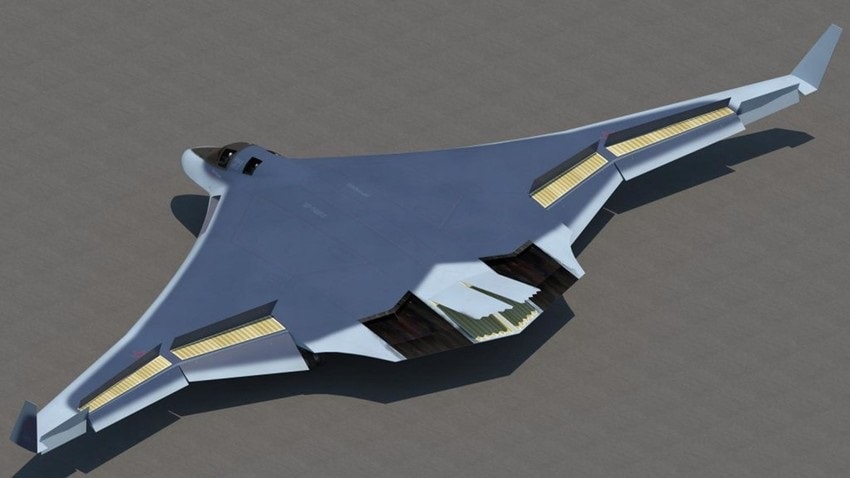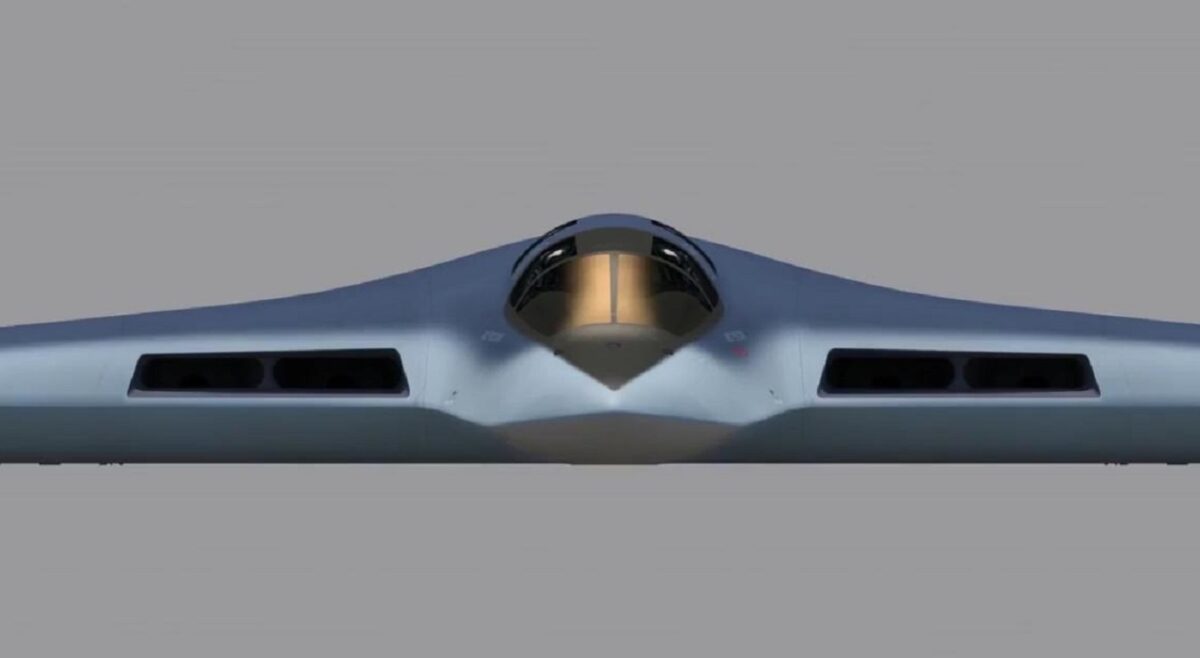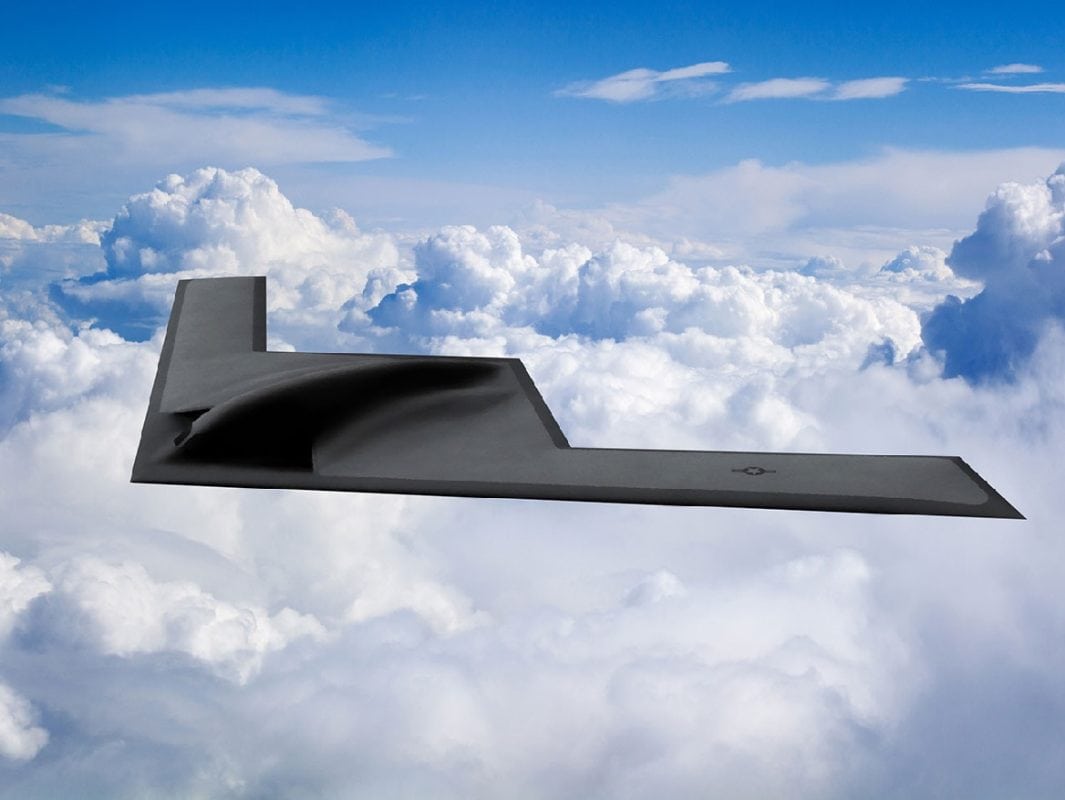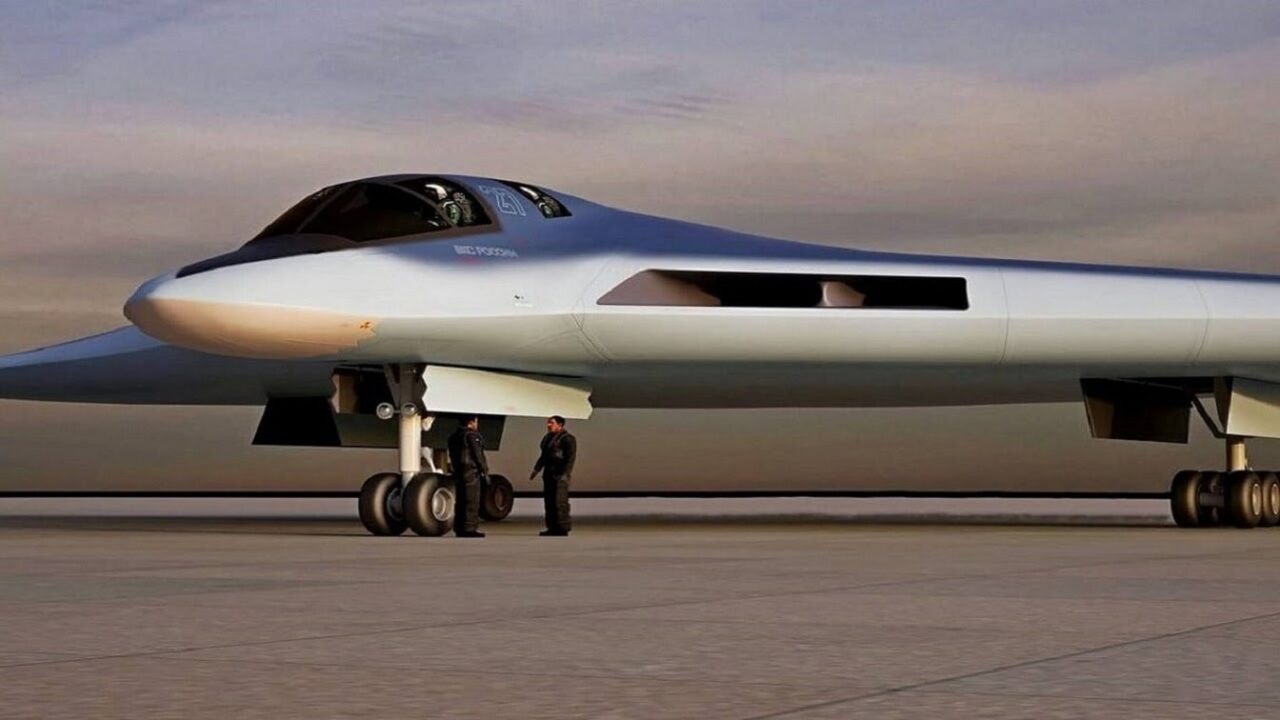Russia’s PAK DA Stealth Bomber To Rival US B-2: The Tupolev PAK DA is the Russian military’s next-generation stealth strategic bomber being developed for the Long-Range Aviation branch of the Russian Aerospace Forces. The PAK DA is set to complement and eventually replace the older Tupolev Tu-95 and the Tu-160 bombers in Russia’s Air Force.
The first prototype is supposed to conduct its ground tests in 2022 and to take its first flight in late 2024 or early 2025 according to Russian news media. It supposedly will carry an armament of an assortment of conventional and nuclear bombs, hypersonic missiles, and drones.
Currently, the United States is the only country with a stealth bomber, the B-2 Spirit, and has two stealth fighters in service, the F-22, and the F-35. China has its own stealth fighter, the J-20, and is currently developing its first stealth bomber the H-20 although details are few on that project. The U.S. has five of the new B-21 Raider stealth bombers in final assembly and is slated to purchase at least 145 of the bombers. The Air Force currently has only 20 of the B-2 design.
PAK DA Design and Development
The Russians have released very little information on the PAK DA stealth bomber, but it is believed that it will be a subsonic strategic bomber, a 7,500-mile operational range, and the capability to continuously remain airborne for up to 30 hours while carrying a payload of up to 30 tons of conventional and nuclear weapons. The aircraft is expected to have a crew of 4. It will be the first Russian (post-Soviet Union) bomber design.
The official Russian news agency TASS announced in May of 2020 that the final assembly of the first strategic stealth bomber within the Perspective Aviation Complex for Long-Range Aviation (PAK DA) program, also known as “Product 80” and “Courier”. It was supposed to be completed by the end of 2021.
The aircraft will incorporate a flying wing design similar to the B-2 and the United Engine Corporation was in the final stages of completing the first prototype engine for the PAK DA. TASS also reported via an unnamed source that the cockpit design and construction are already underway.
The Russian bomber will also reportedly be armed with the Kh-95 hypersonic missile. The Russian Defense Ministry wanted an operational requirement for a hypersonic, air-launched cruise missile with an operational range of no less than 5,500 kilometers (3400+ miles).

Image: Artist rendition. Creative Commons license.

Image Credit: Artist Concept.
How Stealthy Is the PAK DA?
Right now, as with the U.S. Air Force’s B-21 Raider, we know very little of the PAK DA because of secrecy requirements put down by each respective service. So, until these aircraft make their first appearances in public, we’re left with artist renderings of what the aircraft “may” look like.
The Russian Defense Ministry published some artist renderings and the PAK DA appears to be a flying wing design similar to the B-2 and what the B-21 will have as well, since the lack of protruding wings and few leading edges makes it harder for radar, even low-frequency radar to detect.
Of course, stealth technology also consists of using composite materials where any radar returns are reduced by the composites used, which further deflect any signals. The design also must mask the heat of the engines which would show up on infrared detection systems as well as advanced avionics and electric warfare systems that can jam enemy detection systems.
It is in this arena that the United States is still believed to be far ahead of Russia. The Su-57 Russian stealth fighter is considered to be the least stealthy of the current stealth aircraft in service today.

B-21 Raider Stealth Bomber earlier artist rendering. Image: U.S. Air Force.
This may explain the Russian intention of using long-range stand-off munitions operating the PAK DA to well within the protection of Russian air defense systems. If it indeed can perform at the level that Russians claim it will (see the issues they have had fielding the SU-57), it would be a formidable adversary. But until the Russians unveil it and put it into service, it is as my friend Alex Hollings calls it, “another Russian paper airplane.”
Steve Balestrieri is a 1945 National Security Columnist. He has served as a US Special Forces NCO and Warrant Officer before injuries forced his early separation. In addition to writing for 1945, he covers the NFL for PatsFans.com and his work was regularly featured in the Millbury-Sutton Chronicle and Grafton News newspapers in Massachusetts. You can follow him on Twitter: @SteveB7SFG.

